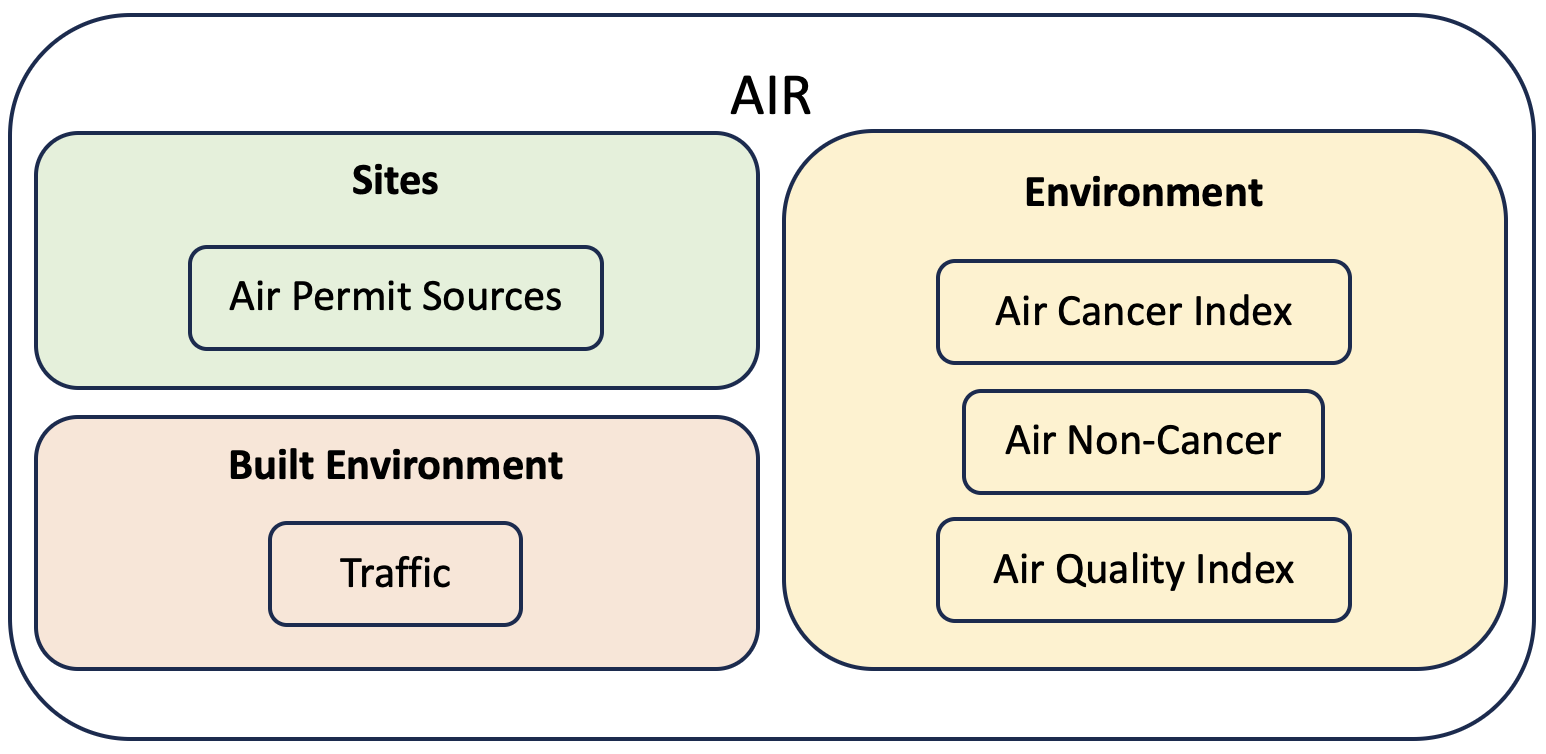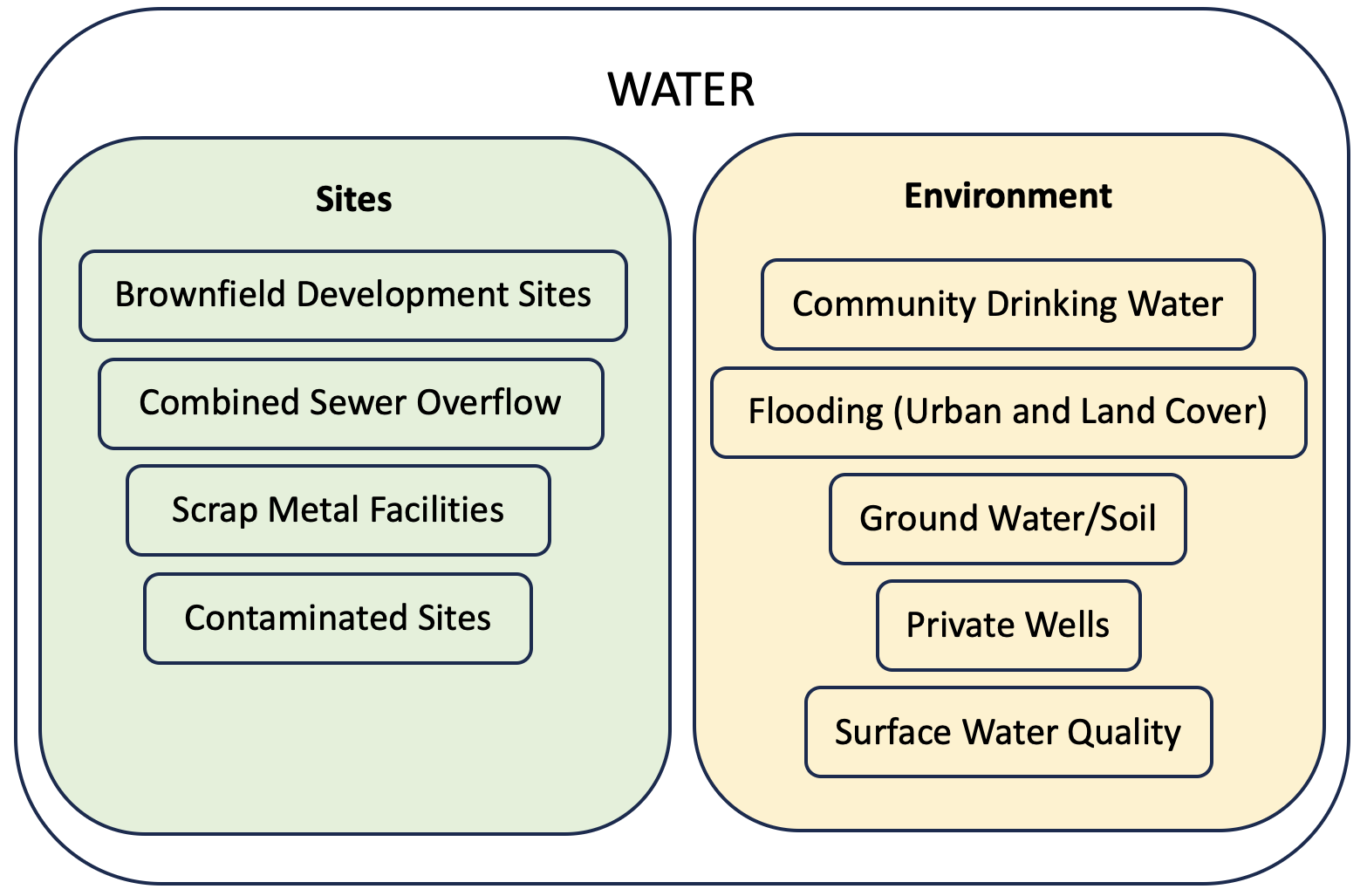Healthy New Jersey
Planners and Other Municipal Officials
Planners and Municipal Officials play a vital role in shaping the future of their communities.
Understanding the health and environmental landscape of your municipality is paramount to fostering a healthy, safe, and sustainable environment for residents.
HCP-NJ reports provide a valuable snapshot of your municipality's health and environmental data, offering you a powerful tool to identify challenges, make informed decisions, and drive positive change.
Follow the steps below and use HCP-NJ to help your municipality identify and address environmental priorities.
1. Convene a Team
Planners may decide to form a diverse team to work on HCP-NJ-related issues. Project leaders, a planning team, stakeholders, and advisory committees can all work together to address environmental and public health issues.
Project leaders and the planning team
The project leaders and planning team should include with people of diverse backgrounds and experiences. Gather your project leaders and discuss key stakeholders who need to be included in the conversation.
Stakeholders
Community environmental health stakeholders include*
- Intersecting municipal and county offices including:
- Communication
- Construction
- Education
- Emergency management
- Environment
- Floodplain administration
- Health
- Planning
- Public works
- Transportation
- Local, county, and state elected officials.
- Residents, especially socially vulnerable residents, or those who live in areas designated as containing high levels of pollutants or high rates of negative health outcomes.
- Local, county, or state governmental and non-governmental environmental and health organizations.
- Organizations that influence community health including.
- Businesses
- Infrastructure managers
- Residential groups
Advisory committees
Advisory committees can provide technical or community guidance. Consider gathering a technical advisory comprised of individuals who have experience and expertise in environmental public health. In addition to broader community engagement, a community advisory committee commits to providing more detailed feedback over the entire stretch of the project.
___________________________________
*This list has been adapted from Resilient NJ, which has several resources on building a team and advisory committees.
2. Examine Your Community Data Summary
Identify and prioritize environmental health topics using your HCP-NJ Community Data Summary. Watch the video below for a walk-through of your municipal environmental health data.
To assess how your municipality compares to your county, look at the rightmost cells (yellow) in your data summary. If you want to compare with the state overall, look at the cells in the rightmost column (green) of your community data summary.
For Public Health Indicators, when the word ABOVE is indicated in red text, this means that that your municipality has a statistically significantly worse rate or percentage. For Environmental Indicators, red text indicates that your municipality is in the 80th percentile or above for this indicator. If a municipality is in the 80th percentile, this indicates that 80% of other New Jersey municipalities are doing better on this environmental health indicator.
Indicators with red text might be good places to start working toward improvement. However, many municipalities have more red indicators than they can immediately begin to address. In addition, municipalities may choose to address indicators that are not highlighted in red text but are of concern to their community.
3. Narrow Priorities
Some municipalities have the capacity to address a several high-priority indicators.
Seek feedback on what indicators are most important to community members, and present the following strategies for identifying priorities:
A. Identify Indicators Impacting Overburdened Communities
B. For Environmental Indicators: Identify Complementary Indicators
C. Identify Indicators with Funding or Capacity
A. Identify Indicators Impacting Overburdened Communities (OBCs)
Environmental health inequities can exist within a municipality, and you can help address these inequities by prioritizing red indicators that impact (OBCs).
The Environmental Justice Mapping, Assessment and Protection Tool (EJMAP) can help you investigate environmental health indicators at a census block group level and view how those indicators intersect with overburdened communities (OBCs).
To understand EJMAP and the definition of OBCs, go to the introduction tab.
To see how some HCP-NJ indicators are disproportionately impacting low-income, minority or limited English proficiency residents, take the following steps
- Go to the Stressor Summary tab.
- Search for your municipality.
- Look for OBCs using the legend.
- Click/tap on the OBC block group.
- Scroll to the Data section on the pop-up, and click/tap on "Download data table specific to [block group number here]".
- Look at the 26 stressors listed in the data table. If the stressor is adversely impacting the OBC, then the cell in the far right "Adverse Stressor" column will say "Yes".
- Compare EJMAP stressors and HCP-NJ red indicators.
Now, narrow your environmental health priorities to indicators that also appear as adverse stressors on EJMAP.
B. Identify Complementary Indicators
Understanding your municipality's interrelated indicators can help you to develop an intervention at the right level of specificity.
In your municipality, several poor air indicators, for example, would not necessarily imply a causal link between indicators. However, understanding the relationship between indicators can help you enact more meaningful solutions.


C. Identify Indicators with Interest, Funding, or Capacity
Some indicators might have synergies with existing projects, team expertise, or existing funding.
Coordinate with municipal and state official on existing environmental or public health projects might incorporate addressing selected indicators. If there's already momentum behind addressing a certain area of environmental health, you might be able to make more meaningful progress on that indicator.
Turn to the "Ideas for Taking Action" section to see if there might be other ways to increase your capacity to address certain indicators. Funding to address a certain area of environmental health can help you move forward on improving an indicator by increasing capacity or by providing support for project planning. Visit the Grant Writing section of this guidance.
4. Engaging Community Members
Engaging community members is not confined to one step. Seek feedback from your community at many stages of your project, including regarding priorities, plans, and outcome metrics.
The needs of different community members might require diverse methods of outreach and inclusion. Consider how you will create inclusive communications about your project, ways to engage with your project, and mechanisms for soliciting feedback.
The US Department of Commerce National Institute of Standards and Technology provides guidance on community engagement for climate resilience, which might be helpful for addressing environmental issues.
5. Gather Data and Resources
Understand your municipality’s current situation and resources before brainstorming interventions. HCP-NJ can point towards existing data and resources.
The first page of each HCP-NJ indicator section contains data and definitions, including maps. Each section’s “Turning Data into Action” page contains links to NGO and state programs already working on an issue.
If your team has experience with ArcGIS and wishes to recreate HCP-NJ maps with updated data to understand current environmental health, visit the HCP-NJ Technical Documentation for details on how each indicator was created.
6. Develop a Strategy
Discuss with project leaders, team, stakeholders, and advisory board about how to proceed with addressing identified priorities.
Discuss your plans with your community; refer to the resources on community engagement.
Some responses in the public health toolkit include creating zoning laws or ordinances or disseminating communications and public education.
7. Track Progress
If feasible, monitor the impact of your interventions before, during, and after implementation.
Before Implementation
Consider measures of success. Use examples from other implementation projects or other similar municipalities to create target benchmarks. How do those measures of success align with principles of environmental health equity?
During Implementation
Create processes to measure your progress. Talk about how you will collect and manage data and solicit ongoing community feedback and participation.
After Implementation
Compare initial, target, and final measures of success. Discuss and document what factors enabled you to meet targets or what factors mitigated success. If necessary, readjust your intervention to get back on track to meet your benchmark.
Resources
Several toolkits review how to use progress tracking to increase success in municipal policymaking.
The Government Finance Office offers A Performance Management Framework for State and Local Government: From Measurement and Reporting to Management and Improving.
For tracking community health program progress, you can use the Centers for Disease Control and Prevention (CDC) Framework for Program Evaluation.
 Official Site of The State of New Jersey
Official Site of The State of New Jersey

